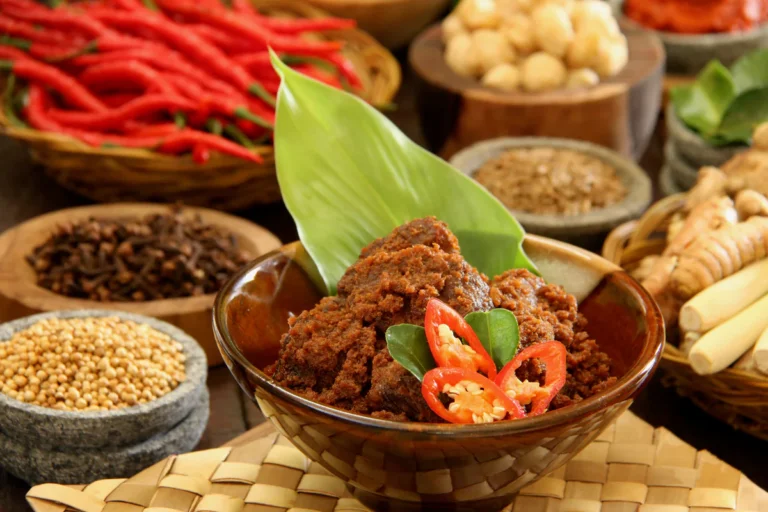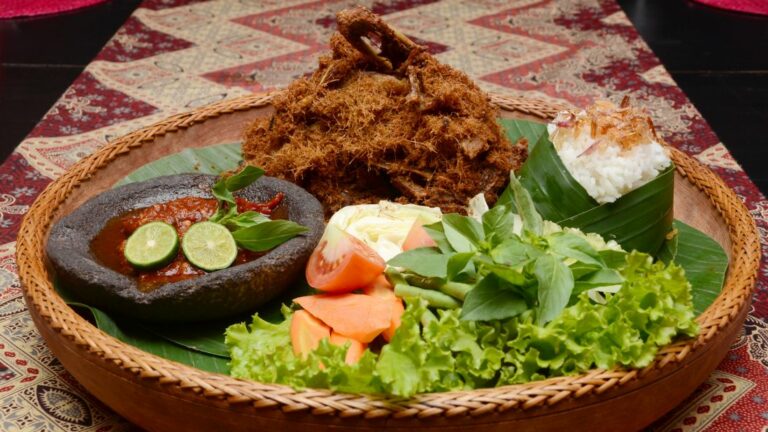Introduction
Indonesia is a country with a rich and diverse cuisine. The cuisine of Indonesia is influenced by various factors, such as geography, ethnicity, and history. Indonesia is located in Southeast Asia and is bordered by the Philippines, Malaysia, and Papua New Guinea to the north, and Australia to the south. Indonesia is also close to China and India, two countries that have had a significant impact on Indonesian cuisine. In this article, we will explore the influences of neighboring countries on Indonesian cuisine.
Historical background of Indonesian cuisine
Indonesian cuisine has a long history that dates back to ancient times. The cuisine of Indonesia is influenced by several factors, such as the indigenous culture, the influence of traders, and the colonial history of the country. The indigenous culture of Indonesia is diverse, with over 300 ethnic groups living in the country. Each ethnic group has its own unique cuisine, which contributes to the overall diversity of Indonesian cuisine. Throughout history, Indonesia has been a hub of trade, and this has had a significant impact on Indonesian cuisine. Traders from various countries, such as China, India, and the Middle East, brought with them their ingredients and cooking techniques, which were incorporated into Indonesian cuisine.
Influence of neighboring countries on Indonesian cuisine
Indonesia is a country with a rich culinary heritage, and neighboring countries have had a significant impact on Indonesian cuisine. China and India, in particular, have had a profound influence on Indonesian cuisine.
Influence of Chinese cuisine on Indonesian cuisine
Chinese cuisine has had a significant impact on Indonesian cuisine. Chinese immigrants who came to Indonesia brought with them their cooking techniques and ingredients, which were incorporated into Indonesian cuisine. One of the most popular Chinese dishes in Indonesia is nasi goreng, which is a fried rice dish that is similar to Chinese fried rice. Another popular Chinese dish in Indonesia is bakmi, which is a noodle dish that is similar to Chinese noodles.
Influence of Indian cuisine on Indonesian cuisine
Indian cuisine has also had a significant impact on Indonesian cuisine. Indian spices, such as cumin, turmeric, and coriander, are commonly used in Indonesian cuisine. One of the most popular Indian dishes in Indonesia is curry, which is a spicy dish that is made with various spices and ingredients. Another popular Indian dish in Indonesia is samosa, which is a pastry filled with various ingredients, such as potatoes, peas, and meat.
Conclusion
In conclusion, Indonesian cuisine is a rich and diverse cuisine that is influenced by various factors, such as geography, ethnicity, and history. Neighboring countries, such as China and India, have had a significant impact on Indonesian cuisine. Chinese and Indian ingredients and cooking techniques have been incorporated into Indonesian cuisine, creating a unique and flavorful cuisine that is enjoyed by many around the world. Indonesian cuisine is a testament to the country’s rich cultural heritage and is a must-try for anyone who loves food.



